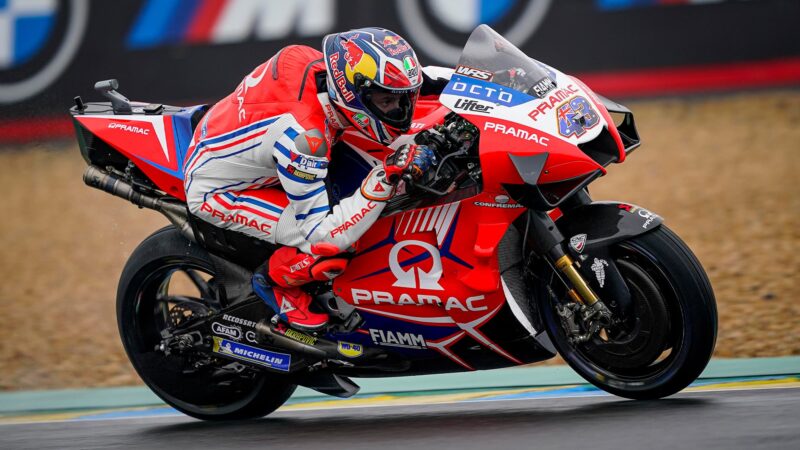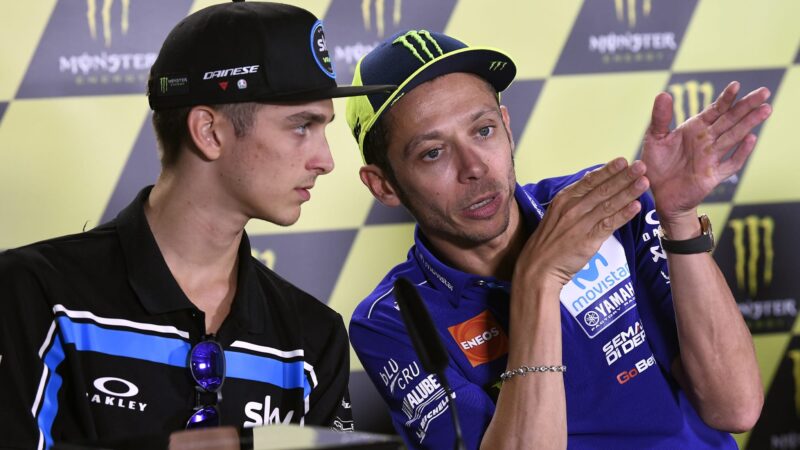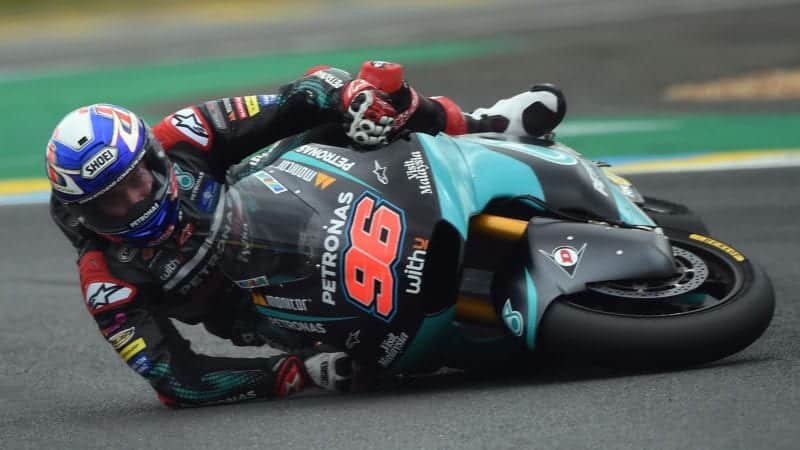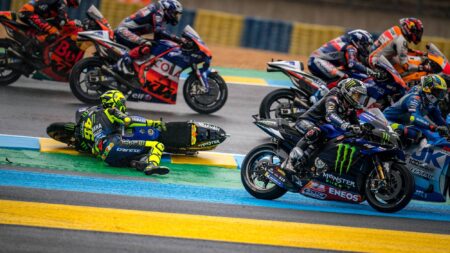The situation at Valencia will be cooler, but at least riders and teams are used to dealing with those conditions at the Spanish track. Last year it was 12C in the morning and 15C in the afternoon, similar to Le Mans.
The big problem at Valencia is always the same: Turn Four, which is Valencia’s version of Turn Three at Le Mans. Last year there were 14 crashes at Turn Four. In 2018, when the weekend was mostly wet, there were 38 crashes at that corner!
Portimao – venue for the season-ending round on November 22 – should be slightly better, with highs of around 19C and not-too-cold mornings.
The big question is which of the title-contending motorcycles reacts best to cool conditions and which suffers the most.
Title leader Fabio Quartararo had a nightmare trying to get heat into his rear rain tyre last Sunday, but he shouldn’t have any problems in the dry because the Yamaha’s usual problem is overheating its rear tyre.
Rossi again: “Usually it looks like we put more temperature into the tyres than the other manufacturers and this is a disadvantage when it’s very hot, but an advantage when it’s cold”.
Suzuki’s Joan Mir, currently just ten points behind Quartararo, might have more reason to worry, after having all kinds of problems in the dry at Le Mans.
“The temperature in the front tyre is something we are struggling with,” he said. “I don’t have any feedback and if I try more I can lose the front.”
And yet in slightly warmer conditions at Barcelona both Mir and team-mate Álex Rins climbed the podium, so it seems unlikely they’ll have major difficulties at the last three tracks.
Andrea Dovizioso, eight points down on Mir, shouldn’t have major issues with his Ducati, because straight-line braking to the apex and straight-line acceleration on the exit is a great way to get heat into the tyres.
How not to crash on a cold racetrack: just push harder!

Miller shows how it’s done it in iffy conditions: give it heaps
Pramac Ducati
There’s no one better than Marc Márquez at getting the best out of a cold racetrack. The reigning world champion’s mastery of the front-tyre slide allows him to push harder than anyone, which drives more heat into the front tyre, which allows him to go faster, sooner.
At Le Mans the fastest man in FP2 – when the track was slick-tyre dry, with a few damp patches – was Jack Miller.
“The biggest thing I’ve found with these conditions is that the harder I push straight away, with margin, the safer it is, because you’re getting temperature in the tyres,” said the Aussie. “So that’s my mentality: go out and try to get temperature into the tyres, because if you can get temperature into the tyres, you can make them work a lot better.”
Go too fast and you’ll crash, don’t go fast enough and you’ll crash
The worst thing a rider can do in cool conditions is ease off – which they usually do to get rid of a following rider or to wait for a tow – because in the space of just a few corners the tyres can lose enough temperature to make the next few corners risky.
This has long been the case. The most famous cold-tyre crash of all time – Valentino Rossi during Saturday morning practice at Mugello in 2010 – happened when Rossi closed the throttle for just a few seconds to get a rival out of his way.
It’s bike racing’s Catch 22: go too fast and you’ll crash, don’t go fast enough and you’ll crash.
Luca ‘Marinovich’ to join big-brother Rossi in MotoGP

Rossi and Marini – this is how you follow me into MotoGP
Monster
It’s not official yet, but it seems certain Luca ‘Marinovich’ Marini will be on the MotoGP grid next year, alongside big brother Valentino Rossi, riding an Esponsorama Ducati. This is the first step of the VR46 empire moving into MotoGP and arranging Rossi’s post-racing future.
This isn’t big news, the rumours have been circulating the paddock for ages, but why ‘Marinovich’? This is the Russian nickname given to Marini by his fellow VR46 academicians because he is so icy cool on the racetrack.




